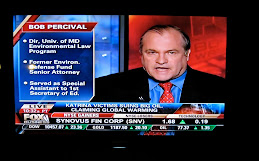As the comment period closed on the State Department’s Supplement Environmental Impact Statement (SEIS) for the Keystone XL pipeline project on April 22, the U.S. Environmental Protection Agency (EPA) submitted comments arguing that the SEIS contained insufficient information to enable the agency fully to assess the impact of the project. The EPA comments question the SEIS’s central assumption that the oil sands crude will find its way to market whether or not the pipeline is built, noting that alternative transportation options could be more costly and congested. They note that the 2010 Enbridge spill of oil sands crude in Michigan demonstrated that it is more difficult to remediate spills of such oil than it is to clean up conventional oil spills because oil sands crude does not appreciably bidegrade. The EPA comments recommend that additional oil spill response measures be required and they suggest further exploration of an alternative route that would parallel the existing pipeline. A copy of EPA’s comments is available online at: http://www.epa.gov/compliance/nepa/keystone-xl-project-epa-comment-letter-20130056.pdfWhile EPA’s comments are a significant development, they would not preclude a decision by the State Department to approve the project. A decision may be reached by the end of the year.
Last week marked the 43rd anniversary of Earth Day and, a few days before, the third anniversary of the Deepwater Horizon oil spill. The first phase of the trial of the civil lawsuits against BP and its partners concluded in federal court in New Orleans the week before. The trial is scheduled to resume on September 16. On April 24, federal district judge Carl Barbier, who is conducting the trial, issued an order directing the parties to brief several issues. The questions surround what the appropriate legal standard should be for finding “gross negligence” or “willful misconduct” under the Clean Water Act and the Oil Pollution Act of 1990, what acts or omissions are necessary to support such findings, and the impact of compliance with regulations or “industry standards.”
Today I am posting the final two blog posts from students in my Global Environmental Law Seminar on my parallel blog at www.globalenvironmentallaw,com. They include Melissa Timbers reporting on Chile’s HidroAysén hydroelectric project and Paul Kolster analyzing compliance with the Espoo Convention. To view the student blog entries click on the “Students” link at the top of this page.
On April 23 I spoke on a panel at a conference on “The New Transatlantic Trade and Investment Partnership: Aligning Investment, Patents, and Privacy.” The conference, which was held at the Cosmos Club in Washington, D.C., was cosponsored by the American Institute for Contemporary German Studies and the Ecologic Institute. It focused on the implications of the new Transatlantic Trade and Investment Partnership (TTIP) that President Obama emphasized in his State of the Union Address. The TTIP negotiations between the U.S. and the EU will represent a further effort to lower trade barriers and harmonize regulatory standards between the U.S. and the EU. Carolina Atkinson, special assistant to President Obama, opened the conference by discussing the prospects for the TTIP negotiations. In my presentation I argued that regulatory harmonization should not lead to a reduction in health, safety and environmental protection standards, citing the conclusions of the EU-US High Level Working Group on Jobs and Growth, published on February 11, 2013 (http://ec.europa.eu/enterprise/policies/international/cooperating-governments/usa/jobs-growth/index_en.htm). I also noted that any “race to the bottom” concerns that surrounded other trade agreements should not pose as big an obstacle to the TTIP negotiations because the EU already has standards that generally very high.
While waiting to speak at the conference I was briefly embarrassed when my cellphone rang. I immediately turned the phone off and waited until the conference ended to listen to the voicemail. It was from Tesla telling me that my all-electric Model S had just come off their California assembly line. I can’t wait to relegate my weekly trip to a gas station to a distant memory.

















